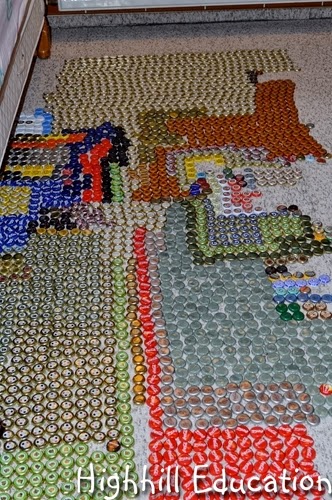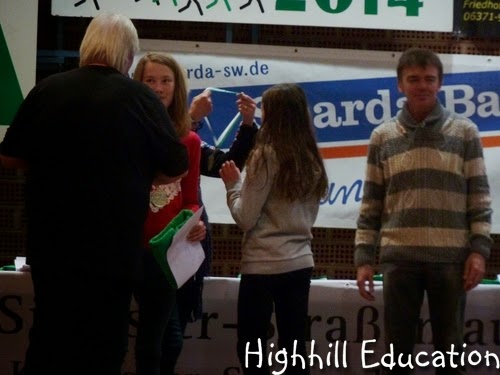Studying artists of the past is educational, but studying living artists is inspirational. Bernhard Hoyes was born in Jamaica and is a successful artist living and breathing in southern California. After learning about Hoyes on the Art Projects for Kids blog I immediately wanted to do a Hoyes inspired project. Much of his work is designed to celebrate his African, Jamaican and Christian background. His use of bright primary colors, coupled with the confident, uplifting spirit displayed by the dancing women in his paintings drew me in. Flowing from a featured center dancer to a background of gay, bright colored dresses fading into the background, I could feel the power of the moment in time captured in the artwork.
To create our dancing ladies we began by sketching the central dancer beginning with the head and working downward toward the dress. Next, the two background dancers were drawn, ensuring that the arms were placed above the head and the hips were placed either forward or backward to display movement.
Then the dresses were filled with primary colored oil pastels, followed by the head, neck and arms. Shading was attempted by adding darker oil pastels to one side of the dresses, faces and arms. (We are still working to improve our shading techniques.)
Then the background was completed with dark shades of brown to give the image a feeling of an outdoor, nighttime celebration.
Although the finished drawing looks simple, it was quite difficult to sketch the figures with a proportionality that looked reasonable while placing the bodies in positions of movement.
Overall, I was quite satisfied with this project that took a few hours to complete. I would like to try another version in the future using watercolors instead of oil pastels.

Check out these great blogs full of educational activity ideas.






























